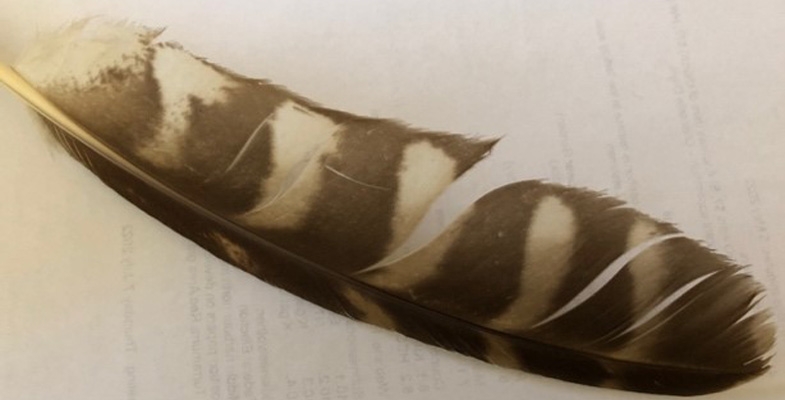Dr Holly Parsons and the Powerful Owl team from Birdlife Australia, with financial assistance from a Ku-ring-gai environmental levy grant, have written a fascinating Powerful Owl feather identification guide.
Here is a taste of the information in the guide.
Identifying a species by a single feather can be very challenging. This guide has been designed by the Powerful Owl Project to help you determine if you have found a Powerful Owl feather. We have also included images of other species whose feathers look similar. The guide focuses mostly on wing and tail feathers as they are most often found but we have provided examples of other feathers where available
A feather found on the ground can tell us a lot of useful information. It can pinpoint locations that are important to birds, inform us of movement patterns and can even be used for genetic testing. A simple feather can help direct important conservation efforts!
Feather anatomy
Feathers are remarkably light and strong. They are composed of keratin, which is the same protein that makes up our hair and nails, as well as the scales of reptiles. A feather consists of a central hollow shaft, called a rachis, rather like a tree trunk. The feather shaft has two vanes, flattened parts of the feather attached on either side of the rachis. The vanes are formed by barbs that branch from the rachis like the branches of a tree. These barbs bear barbules that radiate, like the smaller branches of a tree. Tiny hooks on the barbules connect the barbs together to form the flat plane of the feather vane.
When birds preen, they run the length of the feather through their bills, which engages the barbules and shapes the barbs into a vane, making the feather work as one continuous unit. This helps birds to fly, stay warm and repel water.
Collecting feathers (or rather, not)
While it is very tempting to collect feathers that you find, every state and territory in Australia actually has rules and regulations around the collection of bird feathers. In NSW it is illegal to retain a bird specimen or parts of it (including feathers) without the appropriate permission from the NSW National Parks and Wildlife Service.
There is also a very small, but real risk of infection from a number of diseases when coming into contact with wild birds, their secretions, droppings and feathers. So rather than collecting feathers (or other bird parts), simply admire it, take a photo, and leave it in place (unless you are part of a project with the appropriate scientific licence). If you do touch feathers, be sure to wash and sanitise your hands afterwards.
If you find a Powerful Owl feather, please email This email address is being protected from spambots. You need JavaScript enabled to view it. and include a photo and other relevant information such as the date and location.

